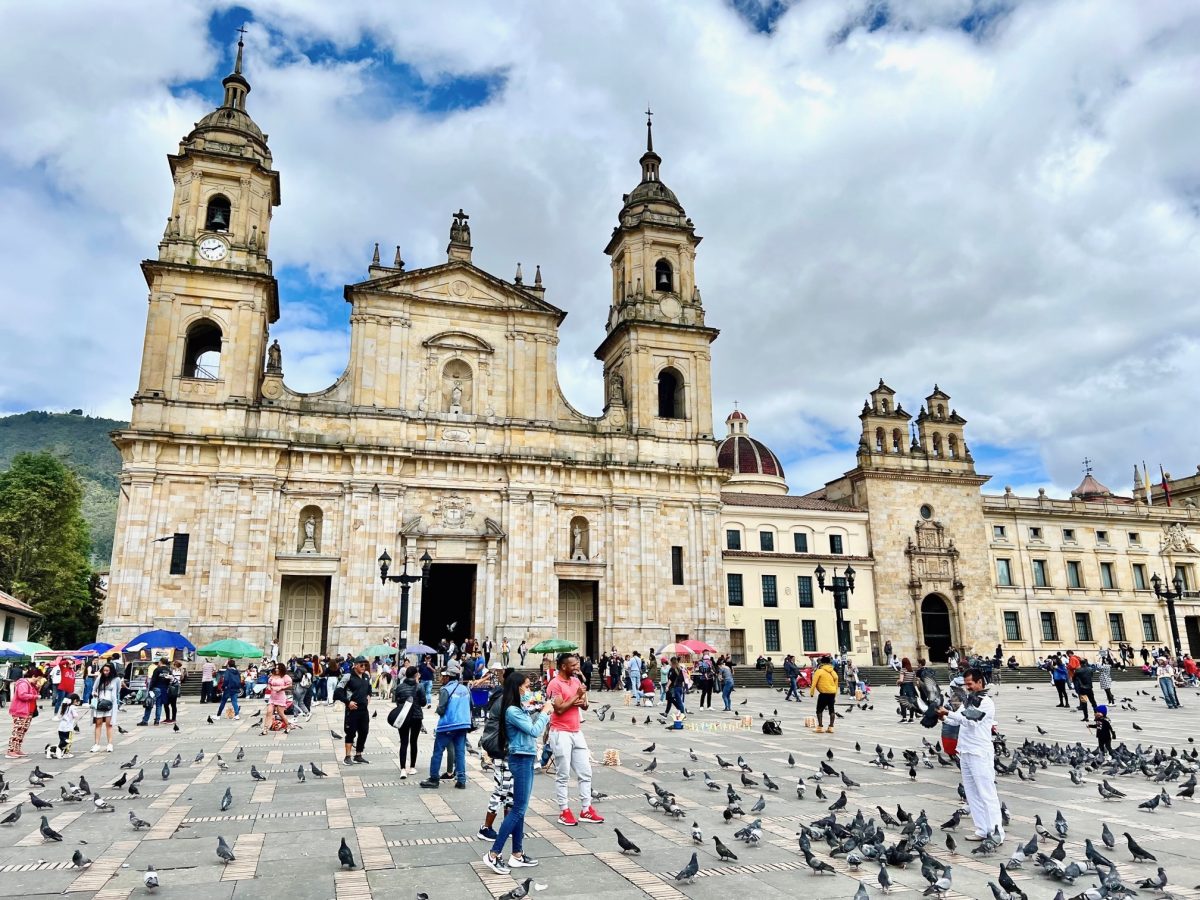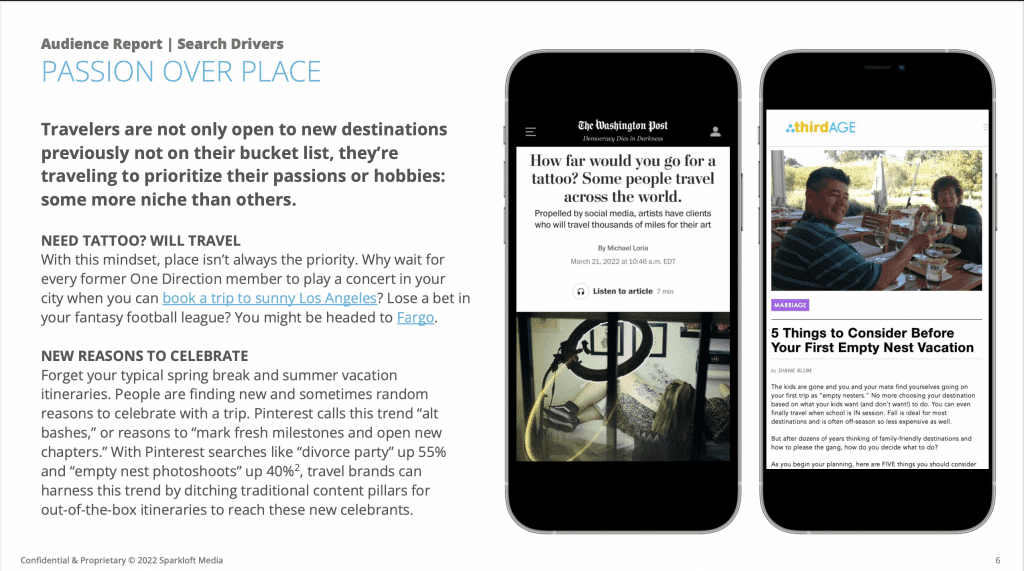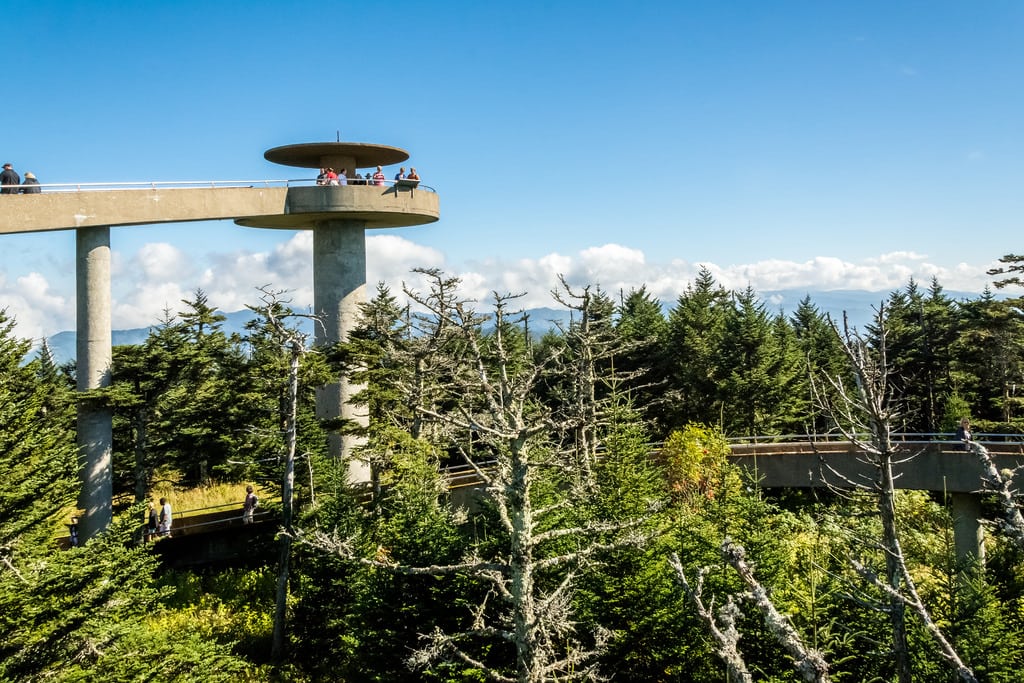Global Tourism Must Confront These 3 Consumer Shifts in Its Sustainability Push

Skift Take
Amid incessant global disruptions, from war to inflation and a zoonotic virus that has spread to 11 countries through cross-border movement, travelers remain undeterred for now in making up for two years of caution and restrictions. What remains true as well is that their "how, what, where and why" has changed and their actions are starting to confirm it, for the first time since the great travel pause.
Novelty, purpose, connection — and not specific destinations — are now travelers’ primary goals in the first year of broader rebound since 2020. That means it’s about passion over place, and interest over a specific country, at a time when life feels closer than ever to a post-pandemic reality. Those are the key findings in the new traveler sentiment report from social media marketing agency Sparkloft Media, shared exclusively with Skift.
“If we look now, people are really starting to think about this post-pandemic world and they're putting those values into practice,” said Gio Palatucci, senior director of research at Sparkloft Media, adding that not even inflation is slowing down the travel conversation, which has really ticked up.
It’s good news that travelers’ desire for more meaning is unfolding just as the industry sees a healthier recovery pace. But here's the reality: global tourism isn’t crafting a new and more sustainable model as quickly as travelers are shifting their mindsets and behaviors. The dialogue coming out of the industry also remains incredibly sparse around the impact of the transformed consumer on host communities and on the industry long-term.
From the hordes of untethered individuals encouraged to stay longer and “live local” to travel fusing into wellness, tourism leaders must address with more urgency the looming shifts emerging out of a changed pattern in consumption, needs and mindsets post-pandemic. What opportunities and what consequences might emerge from the latter, just as global tourism pushes climate action and sustainability to the core of its agenda?
Consumers are currently redefining the meaning of purposeful travel, Pinterest’s future-looking posts further show, according to Sparkloft Media — and it includes traveling as far as needed to fulfill their niche hobbies. These results align with recent data that consumers are splurging more on experiences than on goods, and that they are increasingly in search of sustainable options in hospitality, tours or long-term stays.

But again, how quickly can global tourism redesign its model to meet the needs of the growing number of travelers for whom work and life have merged, experiences are a cure, safety and health lie at the center, and the cry for authenticity and purpose is louder?
Travel as a Holistic "Self-Care Journey"
Sparkloft Media’s study of social sentiment focused on the period stretching from summer 2021 through the first quarter of 2022, examining how mindsets and behaviors might have started to morph as compared to last year’s signs that travelers were ready for the post-vaccine life.
Since then, the discussion around travel being part of a self-care journey has amplified and by extension, how wellness travel is now defined. “It isn't just a traditional spa vacation; it's really total mind, body and soul and we see an uptick in conversation about not just self-care as a keyword but different travel experiences, kind of related to that holistic wellness journey,” said Palatucci.
Social mentions of travel with wellness intentions totalled nearly 1.5 million between March 2021-2022, according to Sparkloft Media. From digital detoxes to “mindfulness trips” and educational trips, “self-care journeys” will continue to grow in popularity with travelers ready to put big bucks behind these trips,” the Sparkloft Media report states.
“For so long, travel and wellness were two separate industries that then merged into what we now know as wellness tourism,” said Sahara Rose De Vore, founder of the Travel Coach Network, a community of travel coaches. “The problem is that within the wellness tourism industry, it’s the wellness side of the industry that is leading the types of experiences and services that are being offered."
There are healing reasons why people travel in the first place, which is why travel is wellness and wellness is travel, De Vore added.
“It’s about human connection, self-reflection, the sense of freedom, fulfillment, finding purpose, getting out of your comfort zone, experiencing new feelings, and to transform — this is the mark that travel brands are missing in not only their services and experiences but in how they attract and speak to travelers.”
It’s clear travel in all of its forms — from road trips to the RV life and adventures domestic or far flung — has evolved into more consumers’ lives as an antidote. So how will the industry harness this opportunity to redefine and decentralize tourism, so as to push for a more sustainable and inclusive offering?
Understanding traveler behavior on a human-level and applying those needs and desires are what brands must focus on to stand out among competitors and to put action behind their wellness initiatives, De Vore added.
A Wave of Untethered Consumers
Of all the transformations that will impact tourism at a global level, remote work and digital nomads rank at the top of the list. Airbnb CEO Brian Chesky’s announcement that employees "have the flexibility to live and work in 170 countries for up to 90 days a year in each location" presents concerns as much as it offers opportunities for destinations and their communities.
Then there's the rising numbers of travelers who don’t have a place to go back to anymore, work independently and are purposefully seeking either a new place to live or they are hopping around for an undetermined period of time, Sparkloft Media's Palatucci said.
Lastly, there are those returning to their past favorite destinations, but with the intent to have a more meaningful and impactful experience. It means, now armed with flexibility, seeing it from a different local lens, said Renata Tilkian, account director at Sparkloft Media.
It’s this wide range of flexible consumer that presents an opportunity for destinations to build a more sustainable kind of tourism. There’s an opening for destinations to diversify their messaging and spread demand more equitably. The opportunities are also ripe for tourism boards and businesses, particularly in low to middle income nations, to find ways to harness the extended presence of digital nomads into a potential opportunity for skills transfer, and the incentive is there to boost infrastructure and services.
But there are also larger concerns that the industry isn't confronting nor discussing — one only needs to look at the examples of Puerto Rico and Ghana, among others, that have received a large influx of digital nomads or residents. How will global destinations address the impact of large numbers of untethered individuals on host communities and their quality of life, from housing to infrastructure and services? How will residents respond to a larger wave of settlers coming into their destinations and impacting their housing at a time when they are more engaged in the future of their destinations? How will tourism boards shift their campaigns to educate this new wave of consumer? Surely the industry can't continue to hide behind these looming issues with the retort that "tourism is a force for good."
Conversely, how will destinations partnering with short-term rental companies to lure remote workers tap into this influx in a way that is equitable and economically inclusive for residents and tourism workers? And where are the conversations about the impact of encouraging a larger wave of global nomad movement at a time of climate crisis?
The Traveler's Sentiment Could Flip —Again
Brands must reach travelers early in the dreaming phase and “craft itineraries and content to address new trip styles and attitudes,” as well as diversify messaging across platforms, according to one of five key takeaways from Sparkloft Media's sentiment report.
Going back to rely on those pre-pandemic personas and the tried and true segment targeting isn’t going to be a reliable strategy, Palatucci said. “I think the way to be successful is to really identify and tap into those emotional drivers, which we really see charging the conversation on social media. So hooking people earlier, based on that emotional resonance is going to be really effective.”
It’s about listening to consumers and tapping into those opportunities as consumers adapt and evolve, and put their values to the test. With pent up demand manifesting itself, as well as the increased flexibility that travelers now have off season, looking into why people are going, when they're going and how they're planning is valuable moving forward, said Palatucci.
“What's the lead-in moment to where you could connect with a traveler who might be looking for a different type of connection or experience?”
But ultimately, the traveler's mindset could change again, Palatucci said. Nothing is certain anymore and brands can’t count on consumer behavior remaining the same.
“Forget the traditional model, we live in a different world,” as Accor CEO Sebastien Bazin said to CNN anchor Richard Quest on Monday, adding that catering to one’s local community and what a business does for its neighborhood are now the priority.
It’s a principle that emerged in the early Covid pandemic years, in the absence of the international traveler, whom destinations are now busy luring back with onerous campaigns.
What if indeed, focusing more on strengthening the offerings for one’s backyard consumer, collaborating with local businesses and host communities beyond surface resident sentiment surveys — as this year's Skift Megatrends underlined — and doing more for one’s immediate neighborhoods were the best approach to both tap into and mitigate the impacts of the changed post-pandemic traveler, now unleashed on an increasingly climate vulnerable and inequitable world?
Skift’s in-depth reporting on climate issues is made possible through the financial support of Intrepid Travel. This backing allows Skift to bring you high-quality journalism on one of the most important topics facing our planet today. Intrepid is not involved in any decisions made by Skift’s editorial team.




